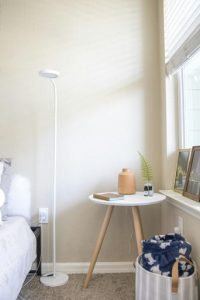Mold in the home not only poses a significant health risk, ranging from allergies to more serious respiratory issues, but it can also damage building materials, furnishings, and personal items. Mold remediation— the process of removing and preventing the growth of mold—is crucial for maintaining indoor air quality and safeguarding the structural integrity of your home.
This guide outlines the essential steps homeowners can take to effectively tackle mold problems, ensuring a safer, healthier living environment. Whether you’re dealing with a small area of mold or a widespread infestation, understanding the right approach to remediation can make all the difference.
Identifying Mold in Your Home
Identifying mold early can significantly reduce the health risks and structural damages it may cause. Mold often appears as discolored patches or spots in various colors, like black, green, or white, and can produce a musty odor. It thrives in moist, warm environments, commonly found in bathrooms, kitchens, basements, and areas where leaks or condensation occur.
To effectively identify mold, homeowners should routinely inspect their homes for signs of moisture and water damage, as these conditions are prime for mold growth. Utilizing a professional mold inspection service can also provide a comprehensive assessment, identifying hidden mold and the underlying moisture sources contributing to its growth. With the help of a remediating mold expert, you can establish the extent of the problem and develop an effective remediation plan. This initial step is crucial in ensuring the success of your remediation efforts.
Safety First: Protecting Yourself During Remediation
Before beginning the process of mold remediation, it’s important to protect yourself by wearing appropriate safety gear. This includes N-95 respirators, gloves, and goggles to prevent mold spores from coming into contact with your skin, eyes, and respiratory system.
In addition to personal protective equipment, ensuring proper ventilation in the work area is crucial to dilute the mold spores in the air. Sealing off the affected area from the rest of the house to prevent the spread of mold spores is also necessary. Safety should always be the priority when dealing with mold remediation.
Containment and Ventilation
To prevent the spread of mold during remediation, establishing a containment area is vital. Using plastic sheeting and tape, seal off the affected area from the rest of the house. Negative air pressure should be maintained inside the containment area to prevent mold spores from spreading to clean areas of your home.
Proper ventilation is also crucial throughout the remediation process. Use fans and dehumidifiers to keep air moving and to extract moist air from the space. This helps in drying out the area quickly and efficiently, hindering further mold growth.
Removing Mold-Infested Materials
Non-porous materials with mold growth, such as metal or glass, can often be cleaned and salvaged. However, porous materials like drywall, insulation, and carpeting that are mold-infested need to be removed and disposed of properly. Such materials absorb mold spores and can continue to be a source of mold growth even after surface cleaning.
The removal process should be carried out with care to prevent disturbing the mold spores and spreading them to other areas. Double-bagging and securely sealing contaminated materials before disposal can help minimize the risk of spreading mold spores during removal.
Cleaning and Disinfecting
After removing the mold-infested materials, it’s time to clean and disinfect the remaining surfaces. Use a mold-killing solution, like a mixture of water and vinegar or a commercial mold removal product, to clean the walls, floors, and any furniture in the area. Allow the solution to sit for the recommended time before wiping or rinsing it off.
Thoroughly cleaning the area also includes vacuuming with a HEPA-filter vacuum to capture any residual mold spores. This step is crucial in ensuring that the space is free from mold and preventing any potential for future growth.
Prevention: Keeping Mold at Bay
The final step in mold remediation is to implement measures that prevent mold from returning. This involves addressing any moisture problems, ensuring good ventilation, using dehumidifiers in prone areas, and routinely inspecting your home for signs of mold or moisture.
Moisture control is the key to mold prevention. Repair leaks immediately, maintain gutters and downspouts, and consider waterproofing measures to protect your home. By keeping your home dry and well-ventilated, you can create an environment that is inhospitable to mold growth, ensuring your home remains safe and healthy.

Successfully remediating mold in your home not only involves removing current growths but also demands a proactive approach to prevent its return. It is crucial to adhere to a thorough process that includes identifying mold, wearing appropriate safety gear, containing the area, removing infested materials, cleaning, disinfecting, and, most importantly, implementing preventive measures. By understanding and applying these steps, homeowners can safeguard their health and protect their homes against the damaging effects of mold.

Recent Comments